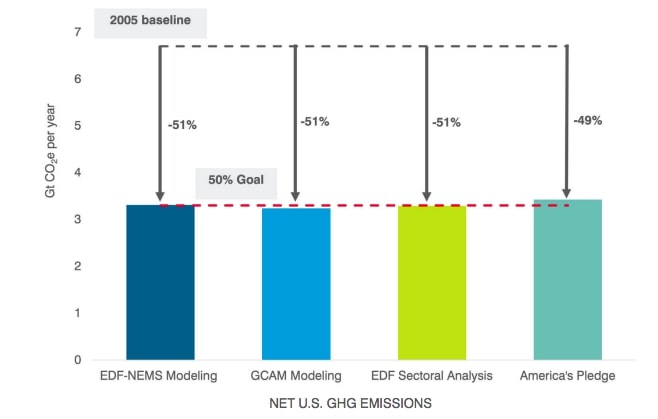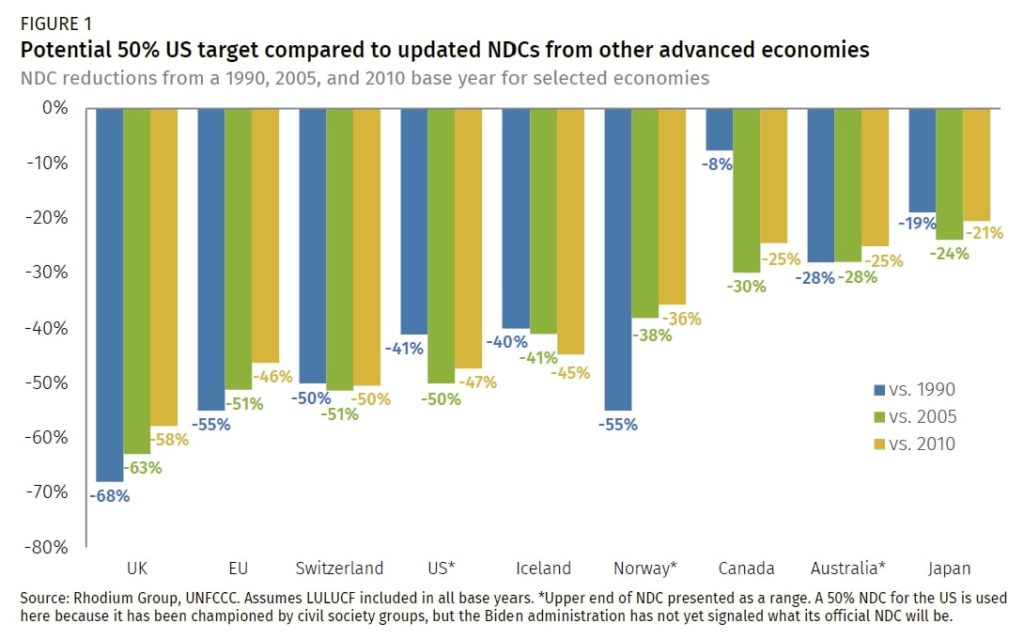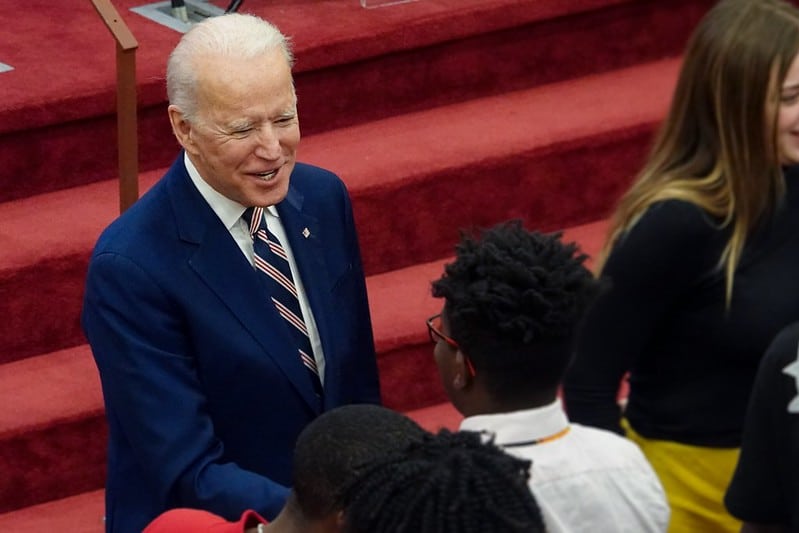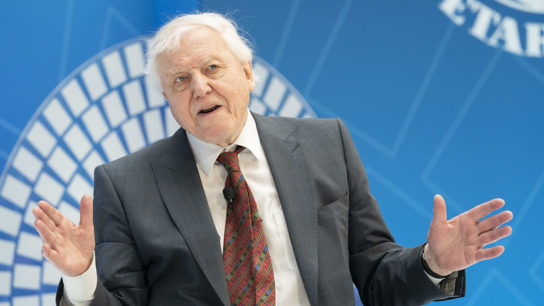Mere hours after being sworn in as the 46th President of the United States, Joe Biden honoured his pledge to rejoin the Paris Agreement to cut global greenhouse gas emissions. The President aims to put climate change at the forefront of his administration’s policy planning, and to place the US in a position of global leadership in countering climate change. Rejoining the Paris Agreement is a good step in this direction, but it is only the first. Domestic policy, such as the recently introduced infrastructure plan worth around USD$2 trillion, will help electrify and spur innovation in various sectors, but Biden still needs to reset the US’s damaged image abroad and restore international confidence in America’s commitment to tackling climate change. At a virtual climate summit to be held on April 22 on Earth Day, Biden is expected to announce the US ’s new NDC, its commitment to reduce its greenhouse gas emissions. What should we expect?
—
The Paris Agreement outlines a framework to limit global temperature increase to well below 2°C above pre-industrial levels, while pursuing efforts to limit the temperature increase to 1.5°C. To achieve this goal, signatories must provide an actionable emissions reduction target that represents how they singularly intend to lower global greenhouse gas emissions. These are known as Nationally Determined Contributions, or NDCs, non-binding climate targets, policies or measures. Each country’s NDC is unique and reflective of that country’s share of global carbon emissions, determined by their national circumstances, capabilities and priorities.
When the US first ratified the Paris Agreement under the Obama administration in 2015, its NDC comprised a target to reduce carbon emissions by 26-28% relative to 2005 levels by 2025. But Obama’s successor, Donald Trump, swiftly and infamously announced the United States’ intentions to withdraw from the Paris Agreement, arguing that the accord would weaken national sovereignty and place the US at a ‘permanent disadvantage’ to other countries.
Trump’s decision to withdraw the US from the Paris Agreement was criticised domestically and internationally, but his administration still embarked on an expansive deregulation campaign that saw more than 100 environmental rules rolled back over his term. Biden’s urgency to rejoin the Paris Agreement and early emphasis on domestic environmental policy is in part a response to the Trump administration’s active attempts to shed the US’s role as a climate policy leader. Now that Biden has made his show of intent and rejoined the accords, the next step is to announce a new NDC that will show the world just how ambitious and ready to reclaim its position the US really is.
For Biden’s upcoming climate summit, fancifully termed the Leaders’ Summit on Climate Change, the White House has invited the leaders of 40 major countries, including those of China, Russia, India, Japan, the UK and the EU. Biden is expected to showcase US climate policies, urge more ambitious action from other nations and reset American climate diplomacy to move on from the combative Trump years.
On the eve of the summit, the question on everyone’s mind is: how ambitious will Biden be? Will his NDC reflect the growing urgency of the climate crisis as well as the lost years of the Trump administration? Or will he retread the comfortable and well-known path of Obama ’s climate policy agenda, which has been criticised in retrospect as insufficient and unambitious?
Even if Biden is ambitious, what is the highest he could conceivably aim for? An ambitious NDC means little if it is not credible. Since NDCs are not legally binding, there is nothing stopping governments from setting an impossibly high reduction target, and avoid being held accountable for missing it when they inevitably do. So an ideal NDC would be highly ambitious, but also highly credible.
Several reports and recommendations that have been issued in recent weeks and months say that the US should be aiming for a 50% reduction in carbon emissions by 2030 compared to a 2005 baseline, a very bold, but feasible, goal. What would the US need to do to half its emissions in the next nine years? Or, to put in another way, could it afford to aim for anything less?
Calls For Ambition
The calls for Biden to announce an NDC to halve the US’s emissions by 2030 have been coming from all sides, some more surprising than others. Activist groups have obviously banded together to urge Biden to focus on an ambitious target, but others have also sounded a more zealous tone. A consortium of over 300 businesses, including Google, Microsoft, Apple, McDonalds and Walmart, co-signed an impassioned open letter calling for an ‘ambitious and attainable’ 50% reduction target.
For Biden and his administration, the main challenges do not lie in simply rejoining the Paris Agreement and announcing a new NDC, but in regaining the respect of the world after four years of American neglect towards climate change. The US returning to the forefront of international climate diplomacy is an act that comes with added expectations from its allies and international observers. Environmentalists, businesses and politicians alike are equally invested in meeting these expectations and showing the world how serious the US is.
“There are broad expectations from America’s allies that the NDC needs to start with a ‘5.’ There is a level of urgency you hear from folks in the White House that is a sea change from even the Obama administration. I think they are serious in putting out an ambitious marker,” says Nat Keohane, vice-president for international climate at the Environmental Defense Fund (EDF), a US-based nonprofit environmental advocacy group. Keohane added that the 50% target “ is ambitious but also feasible. We need to show the US is bringing everything it can to this fight.”
It is important for Biden to set an ambitious NDC and for the US to immediately rejoin international climate diplomacy talks for two reasons. The first is practical. As the second-highest greenhouse gas emitter, global action to fight climate change without US involvement is essentially pointless. The world needs the US to be involved to have any chance at mitigating the worst impacts of climate change.
The second reason is more nuanced. The Biden White House believes that an ambitious NDC and climate policy agenda would inspire other countries and leaders towards higher targets as well. Biden’s goal to establish the US as a global leader in climate policy during his term will at first be mediated through a high NDC, which would allow the US to act as a torchbearer that can guide and support other countries to call for and implement similarly impressive targets. The world is currently off course to meeting the goals of the Paris Agreement, and the US hopes to begin fixing that at Biden’s climate summit.
But this only works if the announced goal is credible and feasible. Biden’s NDC will surely face much international scrutiny, and if he announces an overzealous goal that the US is unable or unwilling to meet, the consequences of such hubristic action would be damaging, not only to the US’s ambition of reclaiming a position of global leadership, but also to the prospects of any lasting form of international climate diplomacy.
The global fight against climate change may well benefit from a leader who can inspire nations to do more and hold accountable those who are unambitious. There are the aspiring but unimpressive leaders, including China, which has announced disappointingly vague or overly modest climate goals, or the EU, which has been often criticised for a perceived lack of ambition. And of course, there is the US, a perennial contender for the title. The US finally seems to be placing climate change at the centre of its policy agenda, and if it announces the right NDC, it could be a catalyst for more ambitious global action. But if the US fails to deliver on its promises, the seat of global climate leadership will remain vacant, and more precious time will be lost.
What Is A Credible Goal?
The forthcoming NDC will obviously need to be ambitious, but its long-term success will largely hinge on its credibility. The 50% target has enough backing from experts, industry leaders and politicians to lend it some credency, but how could the US actually halve its emissions by 2030?
The EDF released a report in March 2021 outlining four independent analyses and modeling approaches that demonstrate the feasibility of a 50% reduction in greenhouse gas emissions, while also citing supporting data from additional models. In short, such a target would be highly ambitious, and would require the executive and legislative branches of the US government to cooperate fully and employ all the tools and resources at their disposal. But such a goal would also be fully credible and feasible if the right policies are put in place.
You might also like: Court Ends Donald Trump’s Attempt to Allow Drilling in Atlantic and Arctic Oceans

Figure 1: A range of four analyses demonstrate that the United States can cut GHG emissions at least 50% below 2005 level by 2030; Environmental Defense Fund; 2021.
So a 50% reduction goal is quite possibly the most ideal and realistic goal Biden could set for his country. But what exactly would the US have to do?
To reach a 50% reduction in emissions, the US would need to decide which greenhouse gases to prioritise reducing. Following the recommendations of the Intergovernmental Panel on Climate Change’s influential 2018 special report, the US would have to differentiate between long-lived gases, such as CO2, and short-lived gases, such as methane. Minimising methane emissions where possible is important, but the main focus should be on reducing CO2 emissions. The EDF estimates that a 40% reduction in methane emissions by 2030 is reasonable and sufficient to stay in line with an overall 50% emissions reduction goal. This early mitigation of short-lived gases will ensure near-term warming and climate damages are reduced, while aggressively reducing the emissions of CO2 and other long-lived gases will reduce warming over the medium to long-term, with an eye towards eventual climate stabilisation.
In terms of which sectors the US would target to curb emissions, the focus would be on those that at the moment are easily electrifiable, such as energy, infrastructure and ground-based transportation. Sectors that are currently difficult to decouple from fossil fuels and emissions, such as aviation and heavy industry, will need time for technology and affordable alternatives to emerge that make electrification possible. This is why it is important for the US to electrify where possible today to give itself more time and flexibility later.
The EDF report presents four models and analyses outlining individual policy recommendations. Most suggestions are present in all models, while some specific ones are mentioned only in one or two. However since they are all very similar to each other, the credibility of their predictions on the feasibility of a 50% reduction goal is strengthened.
All agree that it will require a concerted and all-in effort from all branches of government, with a spate of sector-specific emission reduction policies coming from both the President’s executive office as well as Congress’ seat of power on Capitol Hill. These policies would take the form of regulatory action and clean energy incentives. The government would need to place large investments towards accelerating the development of new technologies, and the bulk of regulatory action and investments towards innovation would invariably need to be focused on the energy sector, which will need to achieve a substantial drop in emissions to satisfy the overall 50% goal. One model cites data from a 2020 report by a team from Princeton University to explain how federal executive action, new legislation and stimulus incentives could combine to achieve power sector emission reductions of 80% below 2005 levels in 2030.
Where the models do differ, they do so only slightly. One model for instance concludes that an economy-wide limit and price on carbon would be essential, and another suggests combining large packages of federal stimulus with expanding the ability of state and local governments to enact localised policy changes.
Overall, however, these models are largely consistent with each other. The most important developments will be in federal policy action, including: a clean electricity standard to reduce power sector emissions by at least 80% below 2005 levels by 2030; a clean vehicle standard to ensure all vehicles sold in the US by 2040 are zero-emitting; new methane standards for oil and gas operation to reduce their emissions by at least 45% from 2012 levels by 2025; new investments and government stimulus packages directed at tech advancements in climate-smart agriculture and expanding existing natural carbon sinks.
The models presented in the EDF report, as well as other models cited in support, all conclude that a 50% emissions reduction goal would be achievable and credible, but Biden could perhaps be tempted to be even more ambitious. The few deviations the models have between each other are not mutually exclusive, and applying every recommended approach from each model would ensure a higher emissions reduction outcome, and still be feasible while requiring a more concerted effort from the government. Two of the models were also performed prior to the COVID-19-induced economic slowdown. While global emissions have since returned to pre-pandemic levels, the report’s authors believe that the drop in emissions in 2020, additional state and local climate action and continuing declining renewable energy and technology costs prove that further reductions beyond 50% could be achievable.
The main stumbling block to this potential NDC’s credibility is the unmissable requirement for extensive government aid. Biden will not be able to achieve anything through executive action alone, and he will need to work with Congress to pass the legislative bills and stimulus packages needed to achieve his goals. Given the current animosities between the Republicans and the Democrats, and the fact that either party would need 60% of the vote in an evenly-split Congress to pass any legislation, Biden might have to take some radical action to have any hope for his ambitious proposals to see the light of day, including doing away with the contentious filibuster.
Climate Policy & Global Leadership
If Biden’s overarching goal is to reclaim the US’s position as a global leader, climate legislation is a good way to do so. This throne is one that every superpower seems to be vying for, but that no one wants to make the domestic sacrifices needed to take. But for Biden, a 50% emissions reduction goal would put the US ahead of some of its closest competitors.

Figure 2: How a potential 50% target by the US compares to NDCs from other advanced economies; Rhodium Group; 2021.
As pictured in the graph above, a 50% reduction target based on 2005 levels would place the US behind the UK in terms of ambition, but on par with the EU, and far ahead of other wealthy states including Canada, Australia and Japan. With the leaders of many of these states attending Biden’s publicly broadcasted climate summit on April 22, the US President may well use the opportunity to dust off the spotlights and have the US shine brightly next to its rivals for the first time in some years. An ambitious NDC that largely outpaces the efforts of most of them would accomplish just that.
With a 50% reduction goal, Biden may be hoping to draw more countries into making similar commitments to halve their emissions by 2030. Environmental groups have called for the US, Canada, South Korea and Japan to adopt 50% goals, and after a recent meeting with Biden, Japanese Prime Minister Yoshihide Suga is believed to be preparing an announcement to lower emissions in the range of 50% below 2013 levels by 2030.
Then there is the question of China. It appears that President Xi Jinping is planning on attending the Earth Day summit, and while China and its leaders have touted ambitious long-term goals and targets, they have largely failed to explain in detail how they expect to accomplish them, and have not yet provided an updated NDC. US special envoy for climate John Kerry recently met with Chinese counterpart Xie Zhenhua in Shanghai, announcing that the U.S. and China would work together to tackle global climate change by “raising ambition” for emissions cuts during the 2020s. Biden wants to engage with China amicably, at least on the climate change front, but is also clearly challenging China to match the US in ambition and detailed policy roadmaps.
With politicians’ minds and journalists’ eyes beginning to turn towards COP26 this November, when all signatories of the Paris Agreement will need to submit updated NDCs, the US has a chance to create momentum for an impressive spate of ambitious NDCs to be announced between now and next fall, if only it is able set an example and push other countries to do so.
To do this, the US needs to announce a 50% emissions reduction goal. Ideally more, but certainly nothing less, and with a roadmap of how the country will get there. 50% is both credible and feasible, and anything lower would indicate that Biden is more invested in maintaining a harmonious relationship with the Republican Party and preserving the dated lawmaking traditions that are impeding majority rule. Biden wants to be known as the President who did the most to fight climate change when it was most needed, and his ambitions could help him be remembered this way, but his legacy could be tainted if he gives into concessions and compromises where there are none to be had.
Featured image by: Flickr














